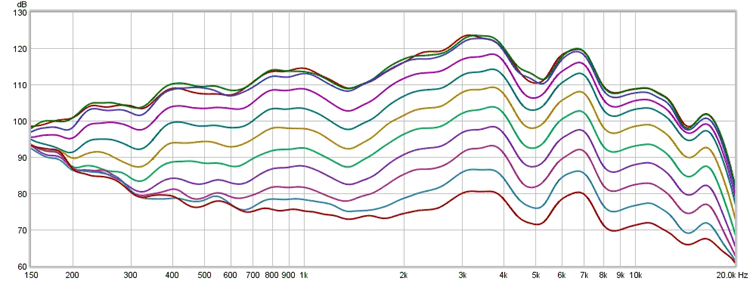SLAA936A September 2020 – March 2021 TAS2563
- Trademarks
- 1Introduction
-
2Quick Tuning Procedure
- 2.1 Initialize Tuning
- 2.2 Flatten Protection
- 2.3 Frequency Response Matching
- 2.4 Microphone Setup
- 2.5 Record Reference Device Response
- 2.6 Set Input Gain
- 2.7 Equalizer
- 2.8 Dynamic Range Compression (DRC)
- 2.9 Smart Amp Protection
- 2.10 Speaker Protection Verification
- 2.11 System Signal Chain
- 2.12 Tuning Elements
- 2.13 PDM MIC
- 3Related Documentation
- 4Revision History
2.5 Record Reference Device Response
Play each noise track on the reference device and record and save the frequency response for each track. These recordings eventually produce a family of curves similar to that in Figure 2-2. This family of curves define the pink noise response of the reference device and contains a lot of information on the reference sound for use later in the tuning process.
 Figure 2-2 Pink Noise Response Curve Family
Figure 2-2 Pink Noise Response Curve Family